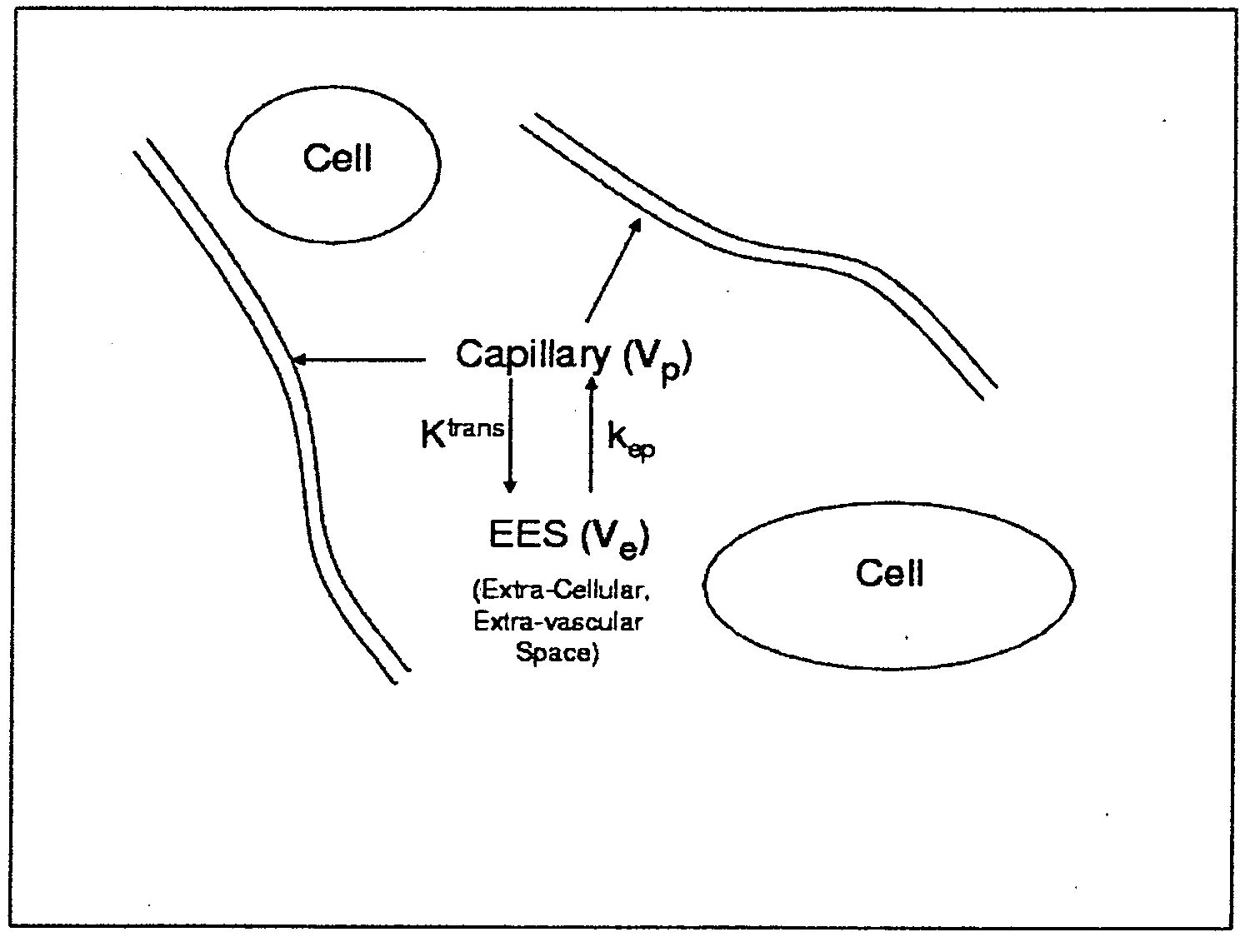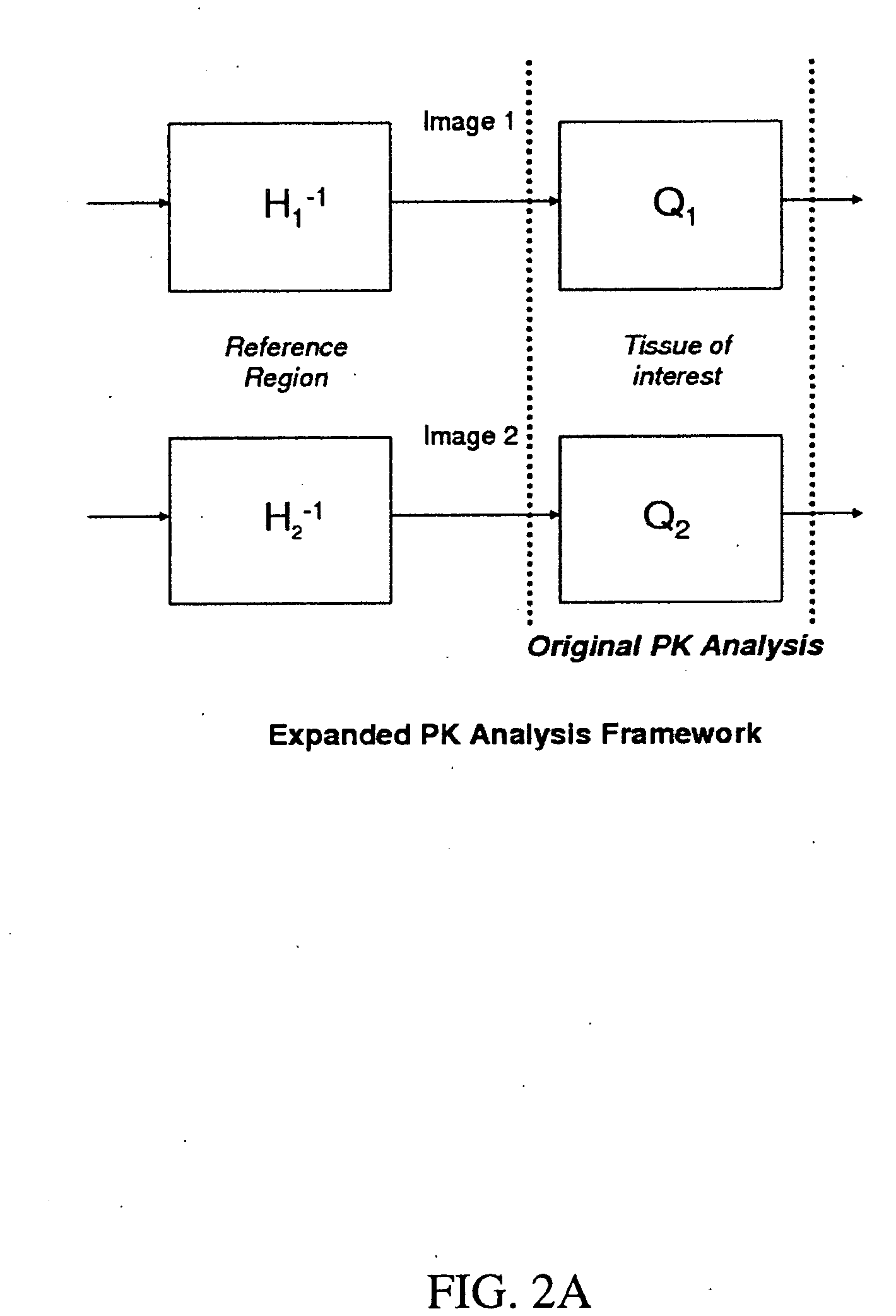Expanded Pharmacokinetic Model for Population Studies in Breast Magnetic Resonance Imaging (MRI)
a population study and pharmacokinetic technology, applied in image enhancement, image analysis, instruments, etc., can solve the problems of difficult breast cancer diagnosis from magnetic resonance imaging data, and impair the effectiveness of any population study conducted
- Summary
- Abstract
- Description
- Claims
- Application Information
AI Technical Summary
Problems solved by technology
Method used
Image
Examples
Embodiment Construction
1. Introduction
[0028]Presented herein, in accordance with an exemplary embodiment of the present invention, is a model for pharmacokinetic (PK) analysis based on the Tofts model. Our model both eliminates the need for estimating the Arterial Input Function (AIF) and normalizes analysis so that comparisons across patients can be performed. Previous models have attempted to circumvent the AIF estimation by using the PK parameters of multiple reference regions (RR). Viewing anatomical structures as filters, PK analysis tells us that ‘similar’ structures will be similar filters. By cascading the inverse filter at a RR with the filter at the voxel being analyzed, we obtain a transfer function relating the concentration of a voxel to that of the RR. We show that this transfer function simplifies into a five-parameter nonlinear model with no reference to the AIF. These five parameters are combinations of the three parameters of the original model and the RR at the region of interest. Contr...
PUM
 Login to View More
Login to View More Abstract
Description
Claims
Application Information
 Login to View More
Login to View More - R&D
- Intellectual Property
- Life Sciences
- Materials
- Tech Scout
- Unparalleled Data Quality
- Higher Quality Content
- 60% Fewer Hallucinations
Browse by: Latest US Patents, China's latest patents, Technical Efficacy Thesaurus, Application Domain, Technology Topic, Popular Technical Reports.
© 2025 PatSnap. All rights reserved.Legal|Privacy policy|Modern Slavery Act Transparency Statement|Sitemap|About US| Contact US: help@patsnap.com



